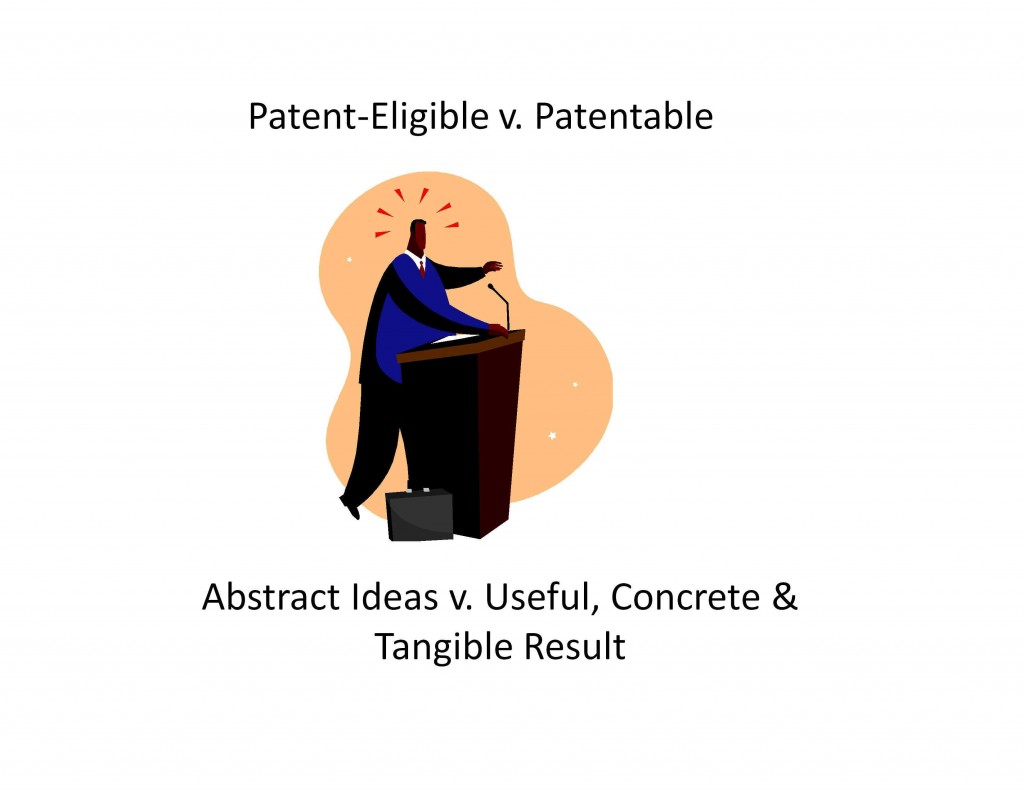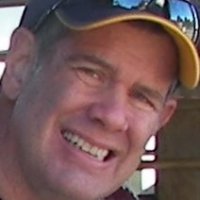 After Monday’s oral argument, many are trying to divine how the U.S. Supreme Court will rule in the Bilski v. Kappos, and whether the Federal Circuit’s “machine or transformation” test will survive. Having now read the oral argument transcript, my own prognostication is that the Federal Circuit’s “machine or transformation” test will be trounced as too inflexible, although the Supreme Court may still retain it as a test, but not the only one, like the “teaching, suggestion and motivation” (TSM) test in KSR v. Teleflex. I also predict that the Supreme Court will affirm the PTO ruling that Bilski’s claim on a method for hedging risks is not “patentable-eligible” subject matter under 35 USC § 101, but on the ground that it covers an “abstract idea,” as suggested by Judge Rader’s dissent in Bilski.
After Monday’s oral argument, many are trying to divine how the U.S. Supreme Court will rule in the Bilski v. Kappos, and whether the Federal Circuit’s “machine or transformation” test will survive. Having now read the oral argument transcript, my own prognostication is that the Federal Circuit’s “machine or transformation” test will be trounced as too inflexible, although the Supreme Court may still retain it as a test, but not the only one, like the “teaching, suggestion and motivation” (TSM) test in KSR v. Teleflex. I also predict that the Supreme Court will affirm the PTO ruling that Bilski’s claim on a method for hedging risks is not “patentable-eligible” subject matter under 35 USC § 101, but on the ground that it covers an “abstract idea,” as suggested by Judge Rader’s dissent in Bilski.
Having now read through the oral argument transcript, it also speaks volumes on what I’ve said before: using 35 USC § 101 as anything other than a coarse screen to rule out patents on “abstract ideas, natural phenomena, and laws of nature” is hopelessly subjective. The Justices repeatedly asked for a test other than the Federal Circuit “machine or transformation” test that could be used, and it’s clear from what was said during oral argument that no one (Justices or advocates) could articulate an objective test beyond screening out “abstract ideas, natural phenomena, and discoveries of laws of nature.” Justice Breyer frankly confessed that he couldn’t come up with any meaningful test under 35 USC § 101.
What also is unclear is how the Supreme Court will view the effect of 35 USC § 273 on what is “patentable-eligible” subject matter under 35 USC § 101. Other than Jakes (the patent applicant’s attorney) mentioning it during oral argument, there really wasn’t any comment from the Justices on 35 USC § 273. But as someone else has mentioned, 35 USC § 273 may be the “elephant in the room” on whether so-called “business methods” are “patentable-eligible” subject matter under 35 USC § 101. In fact, the whole focus in Bilski on whether “business methods” are “patentable-eligible” subject is an unhelpful and unnecessary distraction.
The oral argument transcript also suggests that various members of the Supreme Court (the questions/comments by Chief Justice Roberts are a good example) are conflating (and confusing) “patent-eligible” subject matter under 35 USC § 101 with whether the claimed subject matter is meritorious (“patentable”) under 35 USC §§ 102/103. Unless the Supreme Court disconnects these two issues, we’re going to have a mess on what is “patentable-eligible” subject matter, and especially what is an eligible “process” under 35 USC § 101.
Another glaring problem highlighted by the oral argument transcript is that members of the Supreme Court try to resolve this “patent-eligible” subject matter question in a vacuum. You can’t do that objectively unless you consider the context, which means how that subject matter is recited in the claim. That brings me to my next point: you need to start with 35 USC § 112 to put the subject matter of the claim in the appropriate context. That’s what the Supreme Court did in O’Reilly v. Morse, and it would behoove them to go back to the doctrine in that case (the predecessor to the current “enablement” requirement in paragraph 1 of 35 USC § 112).
I also grow weary of the comment made by various members of the Supreme Court during the Bilski oral argument, as well as many of those who are frankly opposed to software patents, that “patent-eligible” subject matter shouldn’t turn on how the claim is drafted. Folks, that’s the whole point of how to evaluate what is (and is not) “patent-eligible” subject matter: the claim language. In this regard, Gottschalk v. Benson and Parker v. Flook are awful examples of where the Supreme Court simply ignored the claim language and then decided “patent-eligible” subject matter in a vacuum.
I’ll at least give the Supreme Court credit for trying to avoid computer-implemented technology from being completely banned from patenting in Diamond v. Diehr where they did bother to consider the claim language (and the context). But the Supreme Court let the genie out of the bottle in Gottschalk and Flook, and unfortunately, the Federal Circuit seized upon that genie in Bilski in enunciating the “machine or transformation” only test. Also, if “machine or transformation” is the sole test for “patent-eligible” subject matter, how do you evaluate the “patent-eligibility” of “articles (of manufacture)” and “compositions of matter”? That just highlights how inane the determination of “patent-eligible” subject matter under 35 USC § 101 has become between the the Supreme Court’s awful pronouncements in Gottschalk and Flook and the Federal Circuit’s nonsensical “machine or transformation” only test in Bilski. All that the “machine or transformation” test can tell you is whether the subject matter is “patent-eligible” subject matter under 35 USC 101, but not necessarily whether that subject matter is outside 35 USC § 101.
Having reviewed the Bilski application and Bilski claim 1, I’ve also come to the view that this case should have never gone up to the Supreme Court under 35 USC § 101. Instead, the Bilski claims should have been scrutinized (and likely rejected) under one or both of paragraphs 1 and 2 of 35 USC § 112. Many, if not all, of the key claim terms are undefined (and potentially undefinable from) the Bilski patent specification. Illustrative examples are: “series of transactions,” “commodity provider,” “historical averages,” “market participants,” “counter-risk position,” “balances the risk position.” The paucity of the description in the Bilski patent specification simply doesn’t tell you what these claim terms mean, nor does it “enable” the scope of, for example, claim 1.
What has happened in Bilski, as especially reflected by the oral argument, reinforces my view that claims should be judged first under 35 USC § 112 before applying 35 USC § 101. That 35 USC § 101 comes before 35 USC § 112 in the patent statutes shouldn’t change this review order. Until you understand what the claims mean, and whether the scope of those claims are enabled under 35 USC § 112, determining whether the claimed invention is “patent-eligible” subject matter under 35 USC § 101 is an exercise in subjectivity and futility.
One final comment: as Judge Newman said in her dissent in Bilski, the Federal Circuit should have never dumped the “useful, concrete, and tangible result” standard for determining “patent-eligible” subject matter under 35 USC § 101 (as enunciated in Alappat and as reaffirmed in State Street) in favor of the nonsensical “machine or transformation” only test. (The Bilski claim might have failed this Alappat/State Street standard as not providing, as someone else has said, a “concrete outcome.”) The “useful, concrete, and tangible result” standard is the best any court has come up with for objectively separating the “abstract idea” chaff from the “useful” wheat. In fact, under the “useful, concrete, and tangible result” standard of Alappat and State Street, there is no question in my mind the claimed subject matter in Gottschalk or Flook would have (and should have) been deemed “patent-eligible” subject matter under 35 USC § 101. So, in addition to evaluating the claim(s) first under 35 USC § 112, the Supreme Court, as well as the Federal Circuit, would do well to reinstate the “useful, concrete, and tangible result” standard for determining “patent-eligibility” under 35 USC § 101.
*© 2009 Eric W. Guttag.

![[IPWatchdog Logo]](https://ipwatchdog.com/wp-content/themes/IPWatchdog%20-%202023/assets/images/temp/logo-small@2x.png)

![[Advertisement]](https://ipwatchdog.com/wp-content/uploads/2024/03/IP-Copilot-Apr-16-2024-sidebar-700x500-scaled-1.jpeg)
![[Advertisement]](https://ipwatchdog.com/wp-content/uploads/2024/04/Patent-Litigation-Masters-2024-sidebar-early-bird-ends-Apr-21-last-chance-700x500-1.jpg)

![[Advertisement]](https://ipwatchdog.com/wp-content/uploads/2021/12/WEBINAR-336-x-280-px.png)
![[Advertisement]](https://ipwatchdog.com/wp-content/uploads/2021/12/2021-Patent-Practice-on-Demand-recorded-Feb-2021-336-x-280.jpg)
![[Advertisement]](https://ipwatchdog.com/wp-content/uploads/2021/12/Ad-4-The-Invent-Patent-System™.png)







Join the Discussion
4 comments so far.
Paul Cole
November 24, 2009 06:18 pmAs a European practitioner, and therefore something of an onlooker, I have to agree with many of your comments.
CIPA in UK held earlier this year a seminar to celebrate the launch of the new edition of the CIPA Guide to the UK Patents Act, 1977, and I gave a paper on computer software inventions sitting next to Robin Jacob who was a barrister specialising in IP law and is now a judge in our Court of Appeal. The one important question that I put forward is whether the application in issue discloses an invention that is novel, inventive and described in sufficient detail to enable the invention to be performed. Under your 35 U.S.C 112(6) if the claim is functional there is a requirement to disclose sufficient supporting structure, and even if the claim is not purely functional it is good discipline to disclose such structure in any event. Many applications in the business method field would fail under such tests (including, I suggest State Street), and there are strong arguments that it is better to use these traditional and long-established tests first, and only use the “nuclear weapon” of patent-eligible subject matter when it is really necessary. If an application satisfies the traditional tests, then the role of the practitioner and the Patent Office is then surely to help a worthy inventor to gain the protection to which he is entitiled and to try to avoid a deserving application from being rejected on a mere technicality.
Pissed off Programmer
November 13, 2009 12:24 pmA lot of the generic, unspecific, non-technical phrases used in the Bilski patent claims are rampant in software patents. I could be mistaken, but aren’t patents supposed to tell you how to do something, and what thing to do? Isn’t the what part just an idea, and the how is the implementation, which needs to be protected?
EG
November 13, 2009 08:57 amMike,
Thanks for you comment. I know you’re article and I agree with what you say. Now whether SCOTUS will pick up on this is a completely different matter. As you say, we can hope.
Michael Risch
November 12, 2009 07:27 pmAs you know, I make these same arguments in my Everything is Patentable article.
http://papers.ssrn.com/abstract=1085871
We also make the Morse/112 argument in our amicus brief as the “clue” to defining an abstract claim. I’m hopeful the court will pick up on it.
http://papers.ssrn.com/abstract=1485043